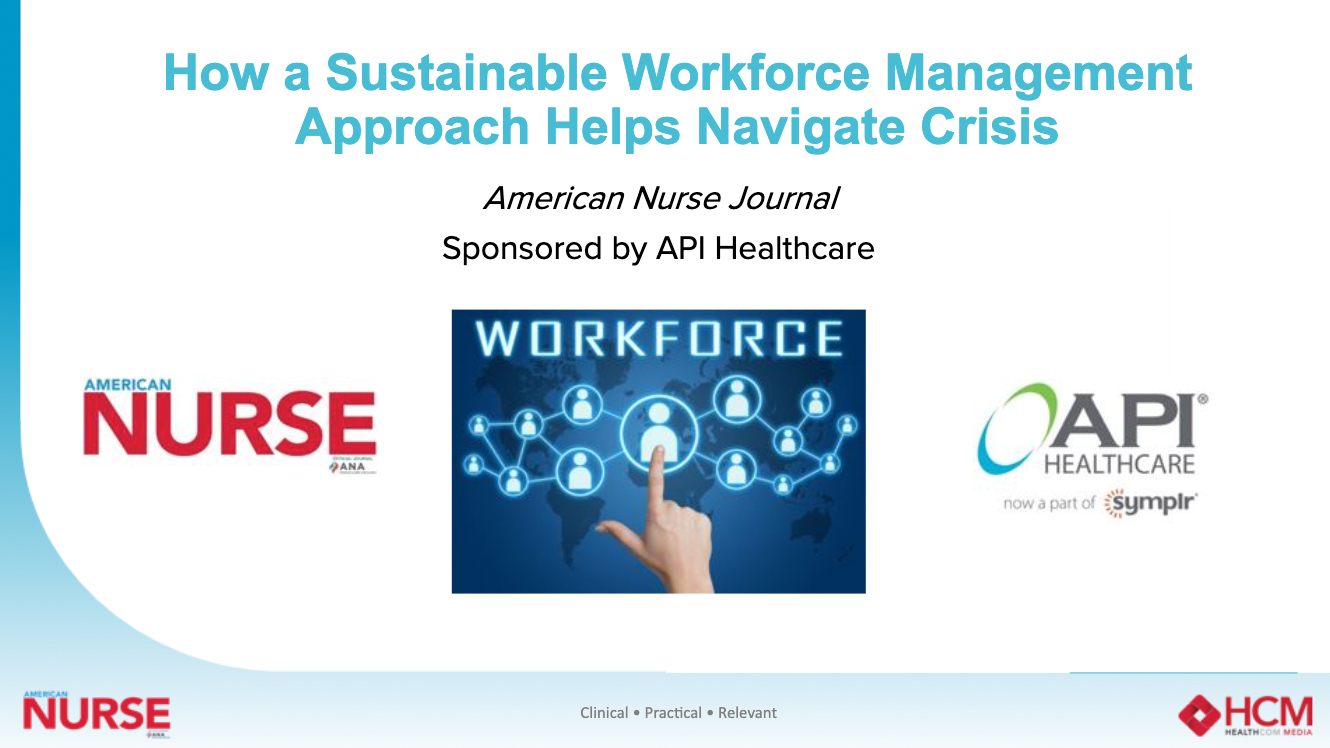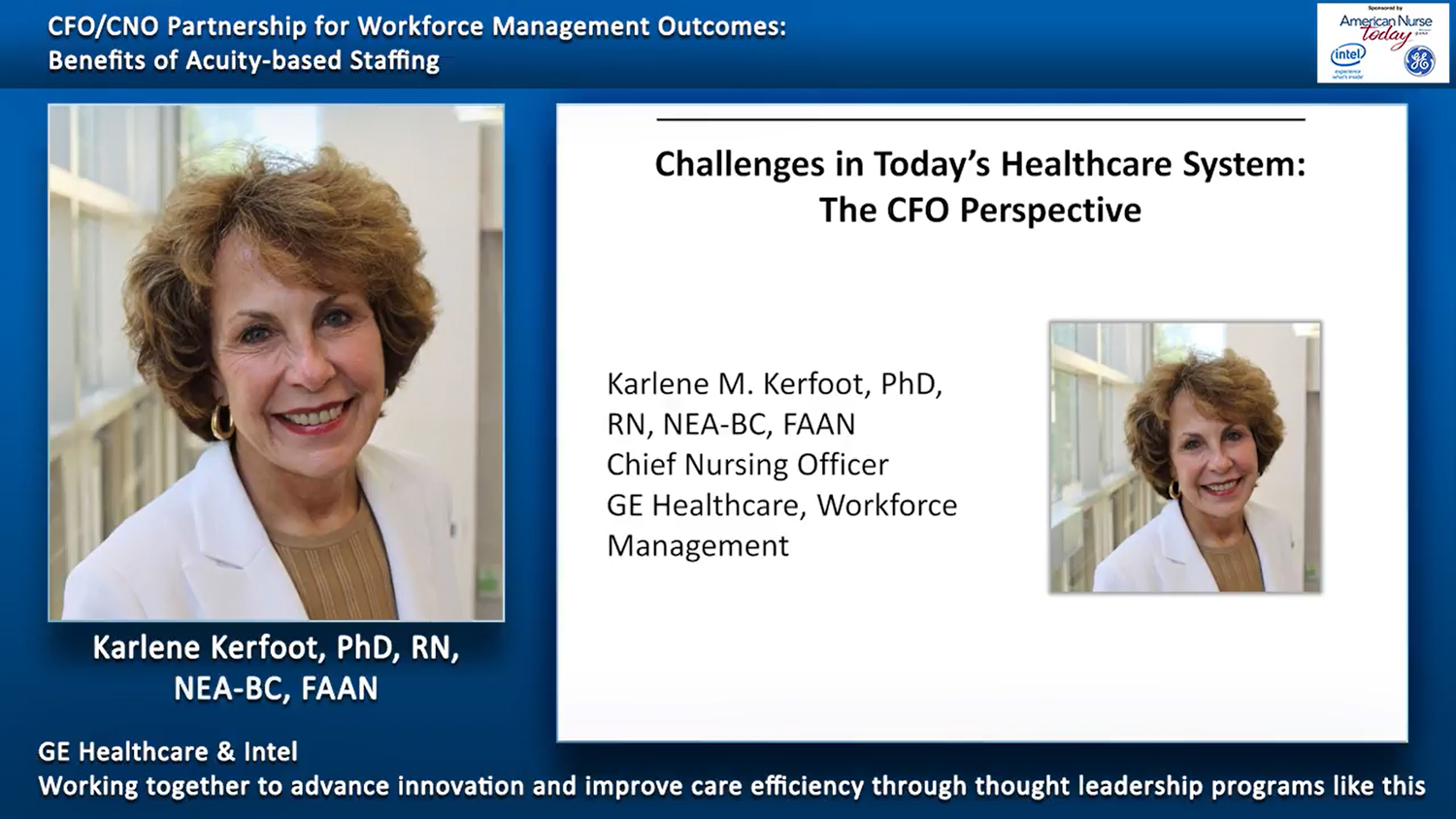American Nurse Today (ANT) interviewed Ann Gantzer, PhD, RN, chief nursing officer (CNO) and vice president of patient services for Swedish American Hospital, about the organization’s successful transition to patient-centered staffing. Swedish American, a 323-bed hospital north of Chicago, Illinois, is a division of UW Health, an academic health system associated with the University of Wisconsin–Madison.
ANT: How is patient-centered staffing different from acuity-based staffing?


ANT: Why did you implement a new staffing system*?
Gantzer: The impetus came when we changed our electronic health record to EPIC as we merged with UW Health. We used the change to look at everything we’d been doing in terms of scheduling.
We’ve been working on this for 3 years. It took almost 9 months just to do the background work, and we converted the system in July 2018. It took a good year to get the documentation functionality transferred to the acuity system and to generate an acuity score the way the nurses wanted it to work. Clinical nurses worked closely with the program throughout implementation and upgrades to ensure that the acuity data were truly reflective of patient and family care needs.
ANT: How were staff nurses involved in the transition to a patient-centered system?
Gantzer: I attribute the success of the implementation to the involvement of staff nurses at every level. They helped select the new software. The solution ranks a patient’s needs from 1–5, using real-time information from the EHR to predict the needs for both the current and upcoming shift. Nurses are able to plan for interventions and care patients will need during the next shift.
ANT: What was the role of the chief financial officer (CFO) in transitioning to this new staffing system?
Gantzer: The CFO, Patti Dewane, BS, CPA, and I need ed to determine what the average census was going to be and how many patients within our budgetary cycle were going to be assigned to each unit. From there, Patti and I, using some of the industry benchmarks that are provided by specific vendors, agreed on the productivity metrics we were going to use. In our organization, we use worked hours per patient day and paid hours per patient day. Other organizations might use equivalent discharges as a unit of service. These decisions are based on the types of care being provided in specific settings.
The CFO and I met with the nursing director team and the finance team and compared the productivity measure with national benchmarks. Based on the comparison, we budgeted volumes to determine what the next year’s full-time equivalent [FTE] allocation would be for each unit. It was truly the result of consensus between nursing and finance to reach the final numbers for budgeting purposes. Once the number of FTEs per unit is decided, that number goes to the service-line leaders at the unit level. The staff ing mix of RNs and patient care techs is determined at the unit level.
The CNO and CFO need to understand each other’s perspectives. I have always been fortunate to work with CFOs who’ve been open to understanding why I may strongly oppose cutting or changing staff. When you can use productivity tools or outside resources to validate your decisions, then it’s easier for a CFO to understand your thinking. I understand the constraints CFOs have and try to look at things from their point of view as well. Reduced reimbursement and increased expenses can create a significant disconnect for finance. It’s the CNO’s responsibility to help the CFO understand the nuances of patient-centered staffing. It can’t be a numbers game, and you can’t quantify nursing judgment.
Ann Gantzer, PhD, RN, offers some words of advice about staffing to her fellow chief nursing officers.
• Involve staff nurses as much as possible, especially when building the program. I can’t overestimate how staff nurse involvement led to our success. This helps with the buy-in and a degree of the accuracy for the types of patients at your organization.
• Understand the productivity and financial stewardship questions you’ll be responsible for answering so that information is factored into the program you build and you don’t have to go back and change things.
• Consider nurse-sensitive quality measures. We built our system to include factors such as falls and pressure injuries that we could track in relation to nursing hours. Think about what you want your system to measure, such as quality and safety indicators. You want to get as much information as possible from it.
• Choose tools that use nursing documentation to calculate acuity vs. a tool that results in redundant nursing effort. We were very intentional about selecting lean methods so there’s no waste or redundancy.
ANT: What evidence do you have that your new system is a success?
Gantzer: I know we’ve saved money, but it’s too early to prove it. Although we haven’t quantified salary dollar decreases, we have been able to quantify how each individual unit is performing. Our organization strives to be between the 40th and 50th percentile rank for our comparison group. Initially, we had multiple units that were well above the 50th percentile. Implementing patient-centered staffing with an acuity software tool allowed for objective real-time monitoring to match resources. As a result, all of the inpatient units are at or below target. That was the nursing division goal, and we’ve met it. Now the tough part is maintaining it.
ANT: Please provide more details about how your patient-centered staffing system works.
Gantzer: We staff in 6-week rotations. The computer scores patients based on categories (such as patient education, I.V. therapy, and medications) that were selected by staff nurses when the program was first being written. A patient requiring discharge education may receive a higher score than a patient who’s 2 days postop because of the time and complexity required. Routine care that every patient should have, such as ambulation and hygiene, isn’t included in the scoring.
Patients with higher scores require more time and nursing care. So a 40-bed unit may have a minimum requirement for nine nurses. But those nine nurses may have different numbers of patients based on the scoring and the RN’s experience level.
Every 4 hours an administrative supervisor, who’s also an RN, assesses the staffing schedule to see what needs will be required in the next 8 hours, where we are over- or understaffed, and to make appropriate matches for patient resources and staffing. It’s literally all they do. We’re proactively smoothing out the schedule so staffing is as efficient as possible.
*API Healthcare’s integrated solutions of Time and Attendance, Staffing and Scheduling, Patient Classification
Janet Boivin, BSN, RN, is a freelance writer.














